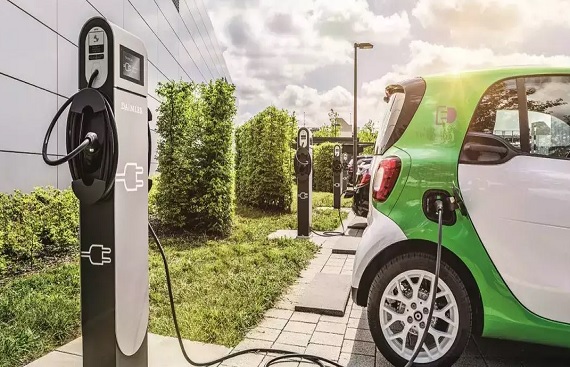How India is Building upon EV Ecosystem?

Amid the swiftly evolving technological landscape, collaborative innovations continually redefine industries, propelling waves of advancement. Within this context, the electric vehicle (EV) sector takes center stage as countries globally emphasize sustainable mobility. Collaborative technology emerges as a pivotal force, enhancing efficiency, nurturing innovation, and expediting the EV industry's expansion. Let us explore the influence of collaborative technology on India's burgeoning EV sector, shedding light on emerging models, design trends, and government endeavors. How collaborative technology catalyzes transformative changes within India's EV landscape, ushering in an era of transportation characterized by heightened cleanliness and efficiency.
Revolutionizing Mobility
The Electric Vehicle (EV) Ecosystem is catalyzing a profound transformation in mobility, representing a significant departure from conventional transportation norms. As the world steers towards sustainable solutions, EVs have become pivotal contenders. However, their impact goes beyond mere vehicle adoption; it encompasses a comprehensive restructuring of transportation dynamics. This ecosystem extends its reach to encompass a complex interplay of elements, from innovative vehicles to the infrastructure supporting them. Charging networks, battery advancements, and progressive policy frameworks converge to create an intricate web forming this revolution's backbone. Crucially, the surge in EV prominence mirrors a global commitment to greener mobility. Industries and governments alike are channeling efforts to champion sustainable practices. The EV Ecosystem heralds a cleaner environment with reduced emissions and the potential for enhanced energy self-reliance and reimagined urban planning. The shift toward electric mobility promises to lessen our dependence on fossil fuels, thus bolstering energy security. What underpins this transition is more than just a technological shift; it fundamentally reshapes how we perceive and execute transportation. The EV Ecosystem encapsulates a transformative journey that aligns with the planet's urgent need for sustainable mobility solutions. By fostering innovation, encouraging policy change, and promoting awareness, this paradigm shift paves the way for a future where transportation is functional, environmentally responsible, and economically viable.
Innovative EV Ecosystem Models
Collaboration synergy has sparked many innovative electric vehicle (EV) ecosystem business models. A standout is the rise of shared mobility services, exemplified by electric ride-sharing platforms, which have rapidly gained traction. These platforms optimize EV utilization and combat urban congestion, addressing a critical challenge of modern cities. Furthermore, the paradigm of subscription-based models has reshaped EV ownership dynamics. By offering access to EVs without the commitment of ownership, these models have broadened the EV market's appeal, attracting a broader and more diverse demographic. This democratization of access aligns with evolving consumer preferences for flexibility and sustainability. Addressing another pressing concern, peer-to-peer charging networks have emerged as a transformative solution. These networks empower EV owners to share their charging infrastructure with fellow users, effectively mitigating the fear of running out of charge and bolstering the overall charging ecosystem. At the heart of these models is collaborative technology. Robust platforms facilitate the seamless operation of shared mobility, subscription services, and peer-to-peer networks. Real-time connectivity enables the orchestration of services, ensuring smooth interactions among users, vehicles, and charging stations. Collectively, these emergent models showcase collaboration's potential to reshape traditional EV industry paradigms. They not only enhance convenience and accessibility but also contribute to the broader sustainability objectives of reducing emissions, congestion, and resource consumption. As collaborative technology continues to evolve, its impact on the EV ecosystem promises to be a driving force in shaping the future of transportation.
Empowering Sustainable Mobility
Customized electric vehicle (EV) designs are essential in India's diverse socio-economic and infrastructural context. Collaborative technology plays a pivotal role in crafting EVs that align with the specific demands of emerging markets. Manufacturers leverage collaborative platforms to engage with local stakeholders, exchanging insights that shape vehicles suited to local preferences and challenges. This approach yields EVs with features tailored for diverse terrains and charging limitations. Robust suspension systems and adaptable charging solutions, bolstered by collaborative insights, are pivotal for navigating varied road conditions and infrastructure gaps. Collaborative technology accelerates the integration of renewable energy sources into EVs. Solar power integration, facilitated by collaborative platforms, resonates with India's pursuit of sustainable energy solutions. This not only enhances the appeal of EVs to Indian consumers but also aligns with the nation's commitment to clean energy and reduced environmental impact. In essence, collaborative technology has revolutionized the design and development of EVs for emerging markets like India. Fostering partnerships among local stakeholders and manufacturers ensures that EVs are not just vehicles but comprehensive solutions that address unique challenges, empower local economies, and contribute to India's sustainable growth trajectory.
Fostering EV Growth
The growth of India's EV ecosystem has been significantly driven by strategic government initiatives, with collaborative technologies as the backbone of their execution. These initiatives have fostered efficient communication and coordination among stakeholders, including government bodies, research institutions, and industry players. A good example is the FAME program, which promotes the manufacturing and adoption of hybrid and electric vehicles more quickly. FAME intends to quicken the shift to electric mobility by providing incentives for EV manufacturing and adoption. Collaborative platforms have streamlined the incentive application process, promoted transparent data sharing, and ensured the seamless disbursement of incentives. This, in turn, bolsters trust and operational efficiency within the ecosystem. Likewise, the National Electric Mobility Mission Plan (NEMMP) has a grand vision of positioning India as a global leader in EV adoption. Collaborative technologies play a pivotal role by integrating charging infrastructure data and facilitating effective nationwide planning and deployment of charging stations. Furthermore, these platforms enable real-time monitoring and maintenance of charging stations, ensuring consistent functionality and reliability.
Final note, Collaborative technology has emerged as a driving force in the development and expansion of India's electric vehicle ecosystem. From fostering innovative business models to tailoring EV designs for emerging markets and facilitating the execution of government initiatives, collaborative platforms have revolutionized how stakeholders collaborate, communicate, and innovate within the EV industry. As India continues its journey towards sustainable mobility solutions, collaborative technology will remain a linchpin, connecting efforts and propelling the nation towards a greener, more efficient transportation future.

.jpg)

.jpg)